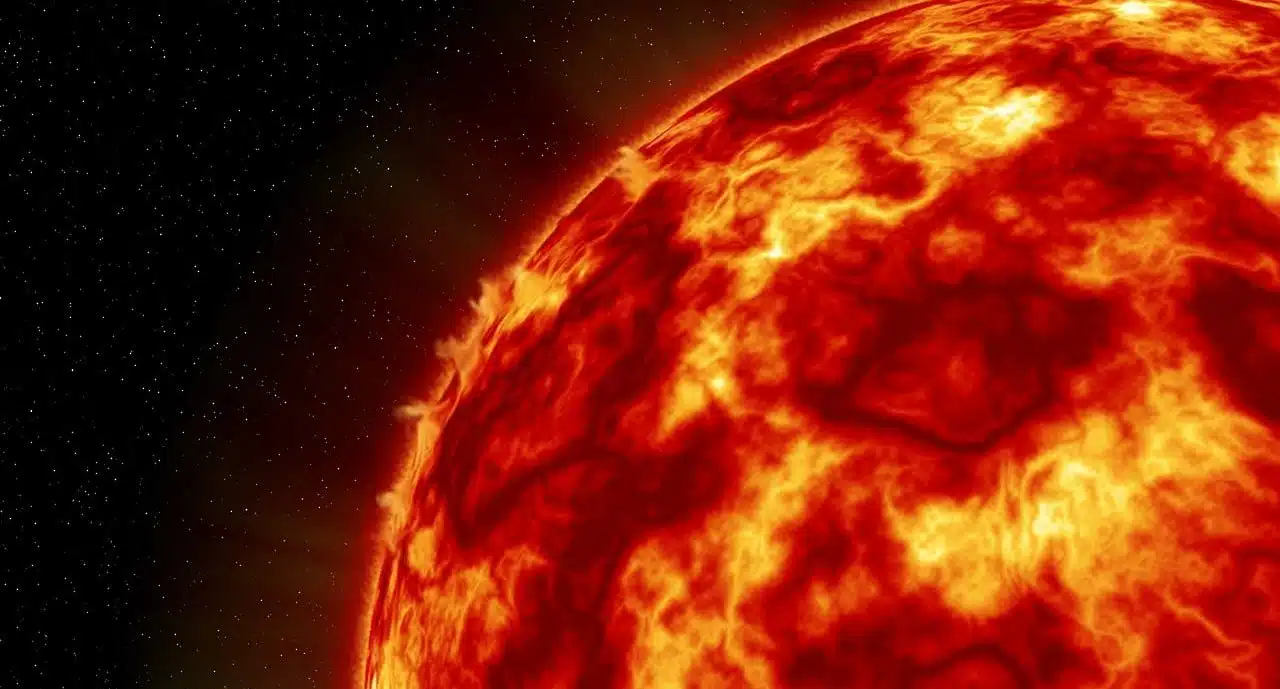
Solar radiation is the emanation of electromagnetic energy from the Sun that reaches our planet.
Solar radiation, a fundamental phenomenon in the field of natural science and astronomy , is the emanation of electromagnetic energy from the Sun that radiates into space and reaches the Earth. It includes a wide range of wavelengths, from gamma rays and x-rays to visible light and radio waves.
The importance of solar radiation lies in its essential role in maintaining life on our planet, as it provides the energy necessary for photosynthesis in plants, regulates the climate and supports most biological processes on Earth. Furthermore, it is a crucial research topic in solar energy production and space exploration, playing a central role in various scientific and technological disciplines.
Features and properties
Solar radiation is a natural phenomenon of great importance, which manifests itself as the emission of electromagnetic energy from the Sun into space and, ultimately, towards the Earth. This radiation is characterized by its diversity in the electromagnetic spectrum, which means that it includes a wide range of wavelengths, each with specific properties and effects.
The electromagnetic spectrum of solar radiation ranges from gamma rays and microwaves, even radio waves .
Visible light is the portion of the spectrum that we perceive with our eyes and appears in a variety of colors. Ultraviolet (UV) is invisible to us, but it plays a crucial role in biological processes, such as the production of vitamin D and protecting the Earth from harmful cosmic rays . Finally, infrared (IR) rays are a form of radiation that feels like heat and plays an important role in warming the planet.
Through a nuclear fusion process in its core, the Sun generates an immense amount of energy, which is released in the form of electromagnetic radiation . This travels through space and reaches Earth, and provides the energy necessary for photosynthesis in plants, which in turn is the base of the food chain .
Additionally, it regulates climate and weather patterns, influencing the oceans, atmosphere and air circulation. Solar energy is also a renewable energy source used in the production of electricity through solar panels, and is a key approach in the fight against climate change .

Thanks to solar radiation, plants can carry out photosynthesis.
Classification
Solar radiation can be classified into three main categories according to its behavior and trajectory in the atmosphere and the Earth's surface: direct, diffuse and reflected . Each of these forms of radiation plays an important role in the energy balance and climate of our planet.
Direct radiation is sunlight that reaches the Earth in a straight path and falls directly on the surface. It is the one that does not disperse or diffuse in the atmosphere. This radiation is most intense in areas where the sky is clear and the atmosphere presents little interference, such as on a sunny day. It is essential for solar energy generation , as it is the most efficient for the solar panel.
Diffuse radiation is sunlight that has been scattered and scattered in all directions by particles in the atmosphere, such as air molecules and water droplets. This creates soft, uniform illumination across the Earth's surface, even in areas shadowed by natural or artificial obstacles such as clouds, buildings or trees. It is important for photosynthesis , as it provides a less intense but more uniform light source throughout the day.
Reflected radiation is sunlight that hits a surface and is reflected back into the atmosphere or Earth's surface. It can be reflected by various surfaces, such as bodies of water, snow, ice, sand, buildings and vegetation. Its amount depends on the albedo or reflectivity of the surface in question. For example, snow has a high albedo and reflects a large amount of solar radiation, while water has a lower albedo and absorbs more radiation.
Ionizing and non-ionizing solar radiation
Radiation can be classified into two main categories based on its ability to ionize atoms and molecules in its path: ionizing radiation and non-ionizing radiation.
Ionizing radiation has enough energy to knock electrons out of atoms or molecules, creating charged ions. This can affect the chemical structure of the matter and has the potential to cause damage to biological cells and tissues. It includes x-rays, gamma rays, alpha particles, beta particles, and cosmic radiation . These particles and photons have enough energy to ionize matter.
It is used in medical applications, such as x-rays and radiotherapy treatments, as well as in nuclear research and in industry for materials inspection and non-destructive testing. Excessive exposure to ionizing radiation can damage DNA and increase the risk of cancer and other diseases. Therefore, strict precautions and regulations are required.
Non-ionizing radiation does not have enough energy to ionize atoms or molecules. Instead, it interacts with matter in other ways, such as by exciting electrons without expelling them. It includes radio frequencies, microwaves, visible light, non-extremely energetic ultraviolet light, infrared and radio waves. These forms of radiation do not cause ionization.
It is used in wireless communications, lighting, solar energy, laser technology, and many other everyday applications. At normal exposure levels, non-ionizing radiation generally does not cause significant damage to biological tissues. However, excess of certain forms of non-ionizing radiation, such as extreme ultraviolet (UV-C) , can have harmful effects, such as damage to the skin and eyes.

Maintaining proper hydration and using sunscreen are two ways to protect the skin against the risks of excessive solar radiation.
Sun exposure: prevention and risks
Sun exposure is an integral part of outdoor living, but it also comes with responsibilities in terms of care and protection . Solar radiation, particularly ultraviolet, is essential for tanning, but its excess can have harmful consequences.
One of the most worrying issues is global warming , which is aggravated by the accumulation of greenhouse gases in the atmosphere. The increase in the Earth's average temperature is related to the weakening of the ozone layer, which acts as a protective shield against harmful ultraviolet radiation. The depletion of the ozone layer has increased exposure to dangerous UV (ultraviolet) rays, increasing the risk of skin cancer, sunburn, and solar dermatitis .
To minimize these risks, we must take measures. Applying sunscreen and moisturizing cream with UV protection factor is essential to prevent burns , allergies and skin damage. Protective clothing and the use of sunglasses help protect you from radiation. On days of high solar intensity, it is important to be aware of the UV index and avoid excessive exposure.
A healthy tan is a goal for many people, but it must be pursued safely, avoiding consequences such as heatstroke . Hydration is crucial to maintaining water balance during sun exposure, and an umbrella provides welcome relief in times of extreme heat. Additionally, those with sensitive skin should be especially careful, as sun allergies can be challenging.
